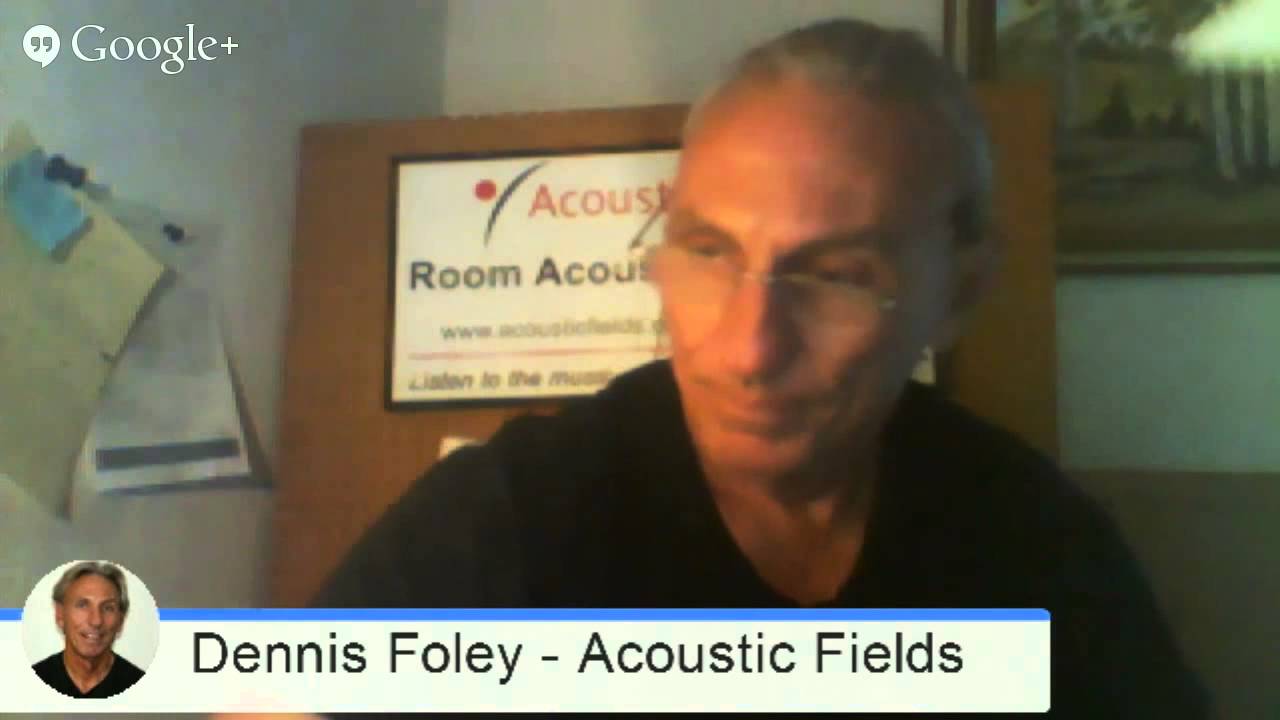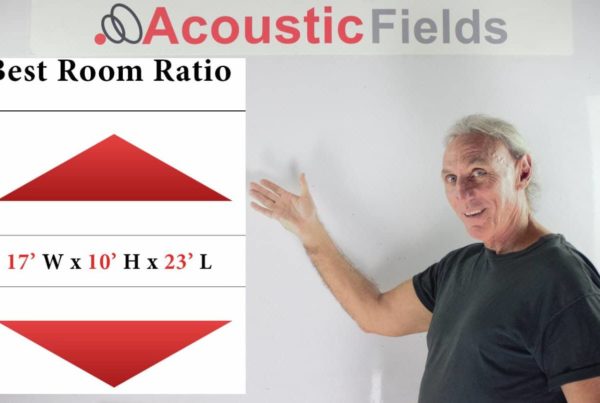Last week I was asked how I would determine how much acoustic treatment for home theater use someone should employ. They had a room that is 19-foot wide and 28-feet long, the AT screen is 6 feet from the front wall and there are two rows of seating with the first row 12 foot from the screen and the second row 2 foot from the rear wall.
So as I stated in my video response above, it’s great that we know the dimensions of the room but let’s step back a little bit and just look at what a home theater room is. Let’s look at the sound fields that are created inside the room, okay?
We have three dimensions of sound. We have length, width and height. So we have three areas within our room where all the sound energy created by the speakers is going to have to live. It’s going to live within those three dimensions, namely length, width and height and when those pressures don’t get along then we have issues, room modes.
Alright, within that length, width and height dimension and frame work, how does the sound move? The sound moves front to rear, left to right and up and down in our home theaters. We have all these multiple speakers producing energy into those two paradigms: length, width and height. Based on the laws of physics and then right or front to rear, side to side, up or down based on the energy of the speakers.
We have two different universes that have to exist within one room. What is the industry solution to all that confusion? Absorption makes sense. It’s the easiest thing to install in a room because you just cover all the surfaces with sound-absorbing material.
Now the material can vary. It could be acoustical panels, it can be X, it can be Y draperies, it doesn’t matter. Rate and level is critical but for general absorption principles it’s pretty easy. But that’s not the best way because sound is moving length, width, height within that dimension and then it’s moving back forth, sideways, up and down. So you have to design the treatment that can impact those fields as you’ve got multiple things going on. So you have multiple surfaces doing different things for different sound fields within the room.
So you have to think about that. With two-channel it’s easier. We have two-channels just in the front of the room, no more, maybe a subwoofer. Two-channels in the front of the room and hopefully it’s rectangular, predictable and consistent. So that’s easier.
With home theater we have all these sources within the same length, width and height dimension as we do with two-channel. But we have all this movement that we don’t have with two-channel and the movement has one more added things it has to do. It has to coordinate and synchronize with the video. So the audio and the video have to marry each other forever.
Diffusion can play a big part in a home theater
So absorption is what the industry uses to deal with all those variables because I really don’t think they understand completely the inter-reactions and how all that impacts the sound quality at the listening position. So that said diffusion can play a big role in this. So it’s absorption and diffusion technologies that we really have to use in our home theater rooms. So the room dimensions are great that just tells us what technology we can use at what position. So that’s good but I really want people to start rethinking about home theater.
What actually is going on in that room? Take the same dedication and concern that you do with two-channel acoustics and transfer that to home theater and use those two paradigms. That the sound energy must operate within and then I think you’ll get a handle on the complexity of treating this because each one of these movements must move within the length, width and height dimension so that it translates to the same thing that’s going on on the video screen in front of you. This all has to be taken into consideration.
So really it’s dimensionally dependent and it’s dependent on your speakers, how many you have and things like that. So it’s a complicated question. But let’s change the way we think about home theater. Using sound absorption everywhere is not the best way. If you think through it a little bit more you’ll understand what each channel is trying to accomplish acoustically and you’ve got to take that and fit it into the dimensions of the room and then achieve an objective at the listening position.
Rear channel is ambient, non-localized energy. Sides, same thing but with more spatiality. Front is all about information, you know and definition, vocals. So each area of the home theater has a particular purpose too. So more sources, more issues, more treatment requirements. Two-channel is pretty easy, 7.1, 10.1, Dolby Atmos 24.4 or something like that, 62. Can you imagine? So just a thought to get everybody kind of re-thinking about how complicated the home theater room is as result of all those sources.
Problematic second row of seating being only 2-foot from the rear wall
Our acoustical goal is to eliminate the boundary surface of the room. Now, when I say the word eliminate I don’t mean get a hammer and a saw and tear it out. Well I do mean that in some cases but if we can’t move the wall then we have to say “Okay, what are we going to do now?” We have to put treatment on the surface to minimize the acoustical artifacts that the surface, distance, texture, material composition, whatever is creating in the room maybe it’s a piece of glass.
But there’s only so much treatment can do. Treatment requires some space from the boundary surface in order to be effective. I don’t know off the top of my head but if you measured the rate and level of absorption as it moved away from the sound absorption technology, you’d probably get a pretty interesting curve and that would be the empirical data for all of this. But you need to give yourself distance from a boundary surface in order for treatment to work effectively and there are just some minimums that we have found that hold true.
When I see anything under 4-feet I just don’t like it because the comb filtering and the boundary reflection issues even with treatment become more difficult. So we have diffusion and absorption as our two technologies for treatment. So I just like to have a fighting chance. In a double row situation in a home theater, the back wall is going to really miss out on a lot of the information that comes out of the front of the home theater system because of that 2-foot distance.
There’s going to be a lot of confusion acoustically when you get close to the boundary surface back there, especially in home theater. We come out and we use 4 feet that’s a bare minimum. 6 is much better but that’s what we use. So when I see anything less than 4 feet I know that I don’t have a lot of room even if I treat the surface to have the impact that the customer wants.
Will we make it better? Of course, but just a few more feet takes the whole issue away. So you go from trying to improve by a matter of degrees to a complete solution in maybe just one foot. Well I think that’s worth stretching for because the sound quality will definitely be worth stretching for.
In Summary
I hope this discussion helps you. If you have any questions at any time I am always on hand to help answer them. Leave them in the comments section or email me at info@acousticfields.com. If you would like to learn more about room acoustics please sign up for my free videos and ebook by joining the mailing list here. I send room tuning tips and things for you to test in your room every Wednesday. They are easy to follow and really help you enjoy more of your music. And if you would like your room acoustic issues analysed for free by me then please fill in the form here and I will be happy to take a look for you.
Thanks and speak soon
Dennis







